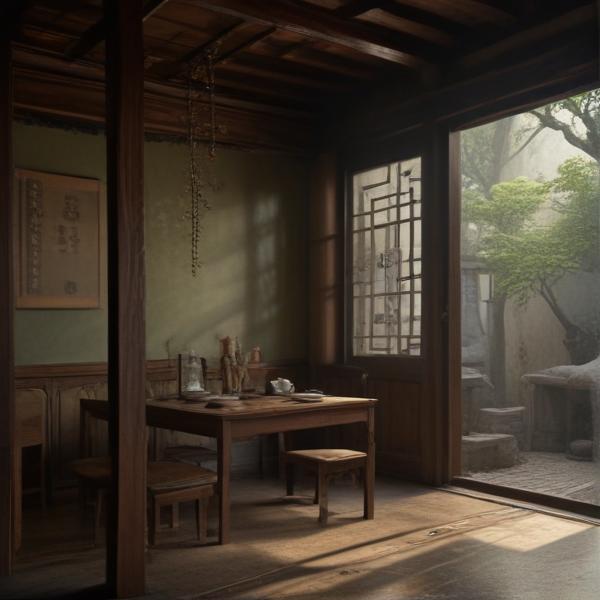基本信息 (Basic Information)
含义与用法 (Meanings & Usage)
中文核心释义 (Core Chinese Meaning): 车辕,指古代车辆前部用来驾驭牲畜、连接车体的横木或直木。
英文核心释义 (Core English Meaning): Shaft or pole of a carriage; the part connecting an animal to the vehicle.
象形意义 / 为何这么写 (Pictographic Meaning / Writing Rationale)
文言文释义 (Classical Chinese Meaning)
与现代意义相近,指车辆前部的木杆、车营驻地。Similar to modern meaning: referring to the carriage shaft or the front pole; sometimes denotes a military encampment.
深入学习 (In-depth Study)
字源故事 (Origin Story)
字形演变 (Character Evolution)
常用词语和例句 (Common Words & Examples)
车辕 (cart shaft; the pole of a vehicle)
马儿拉着车辕缓缓前行。
Eng: The horse pulled the cart shaft and moved forward slowly.
辕门 (the gate of a military camp)
将军在辕门前巡视。
Eng: The general inspected in front of the camp gate.
相关成语 (Related Idioms)
相关成语信息待补充。Related idiom information pending.
多语言翻译 (核心释义) (Translations (Core Meaning))
- French: timon (partie avant d’un véhicule, brancard)
- German: Deichsel (Fahrzeugstange)
- Spanish: timón (vara del carro)
- Italian: timone (asta del carro)
- Portuguese: timão (eixo de carroça)
- Russian: сучок упряжи, дышло
- Arabic: عارضة العربة (دِعامة أمامية)
- Persian: دسته یا میله جلوی ارابه
- Dutch: dissel (wagenstaaf)
- Polish: dyszla (część powozu)
- Vietnamese: thanh chắn (xe ngựa, xe bò)
- Ukrainian: дишель (частина воза)
视频学习资源 (Video Learning Resources)
通过以下链接在热门视频网站搜索 "辕" 的更多讲解:
Search for more explanations of "辕" on popular video sites:
- 在 Bilibili.com 搜索 "辕 字源 说文解字" (Search on Bilibili)
- 在 YouTube.com 搜索 "辕 character origin etymology" (Search on YouTube)
网络参考 (Web References for "辕") ()
网络内容摘要 (Web Content Summary):
“辕”(拼音:yuán)是一个汉语常用字,属于二级字。本义是指车辆前部用来驾牲畜的那根直木,叫做“车辕”。 “辕” (pinyin: yuán) is a commonly used Chinese character. Its primary meaning refers to the pole at the front of a cart for attaching draft animals, known as a "chēyuán" or carriage shaft.
- 象形/起源: “辕”由“车”旁和“袁”组成,表示与车辆相关。早期象形字形描绘车辆部件。 Pictographic origin: The character is formed by the component "车" (vehicle) and "袁", indicating relation to vehicles. Ancient forms resembled actual parts of a cart.
- 文化背景: 在古代,无论田车、兵车还是乘车,“辕”都是指车辆正面、连接牲畜的木结构,是车辆重要组成部分。 Cultural context: In ancient China, whether for farming carts, military chariots, or passenger vehicles, "辕" always referred to this key structure connecting animals to the vehicle.
- 易混点: “辕”易与“垣”(围墙)等形近字混淆,注意区分。 Common confusion: "辕" can be visually confused with "垣" (wall), so take care to distinguish them.
- 常用词语/成语: 如“车辕”(shaft of a vehicle)、“辕门”(古代军营、官署前门)。 Common phrases/idioms: Examples include "车辕" (shaft of a vehicle) and "辕门" (gate of a military camp or office in ancient times).
信息提示:关于“辕”的详细用法、历史演变及成语等内容,在部分来源中有限,建议查阅专业字典获取更深入资料。 Note: More detailed uses, historical forms, and idioms about "辕" may be found in specialized dictionaries, as available information here is limited.
辕《汉字字源》_汉字「辕」_辕在汉字字源中的解释 - 国学大师
辕《汉字字源》,汉字「辕」,辕在汉字字源中的解释,国学大师,汉语字典 明清实录 | 二十四史 | 四库全书 | 古今图书集成 | 历史人物 | 说文解字 | 成语词典 | 甲骨文合集 | 殷周金文集成 | 象形字典 | 十三经索引 | 字体转换器 | 篆书识别 | 近义反义词 | 对联大全 ...
辕_百度百科
辕,汉语二级字,读作yuán,其本意为车辕子,车前驾牲口的直木。 ... 辕,辀也。——《说文》。按,大车、柏车、羊车皆左右两木,曰辕,其形直。一牛在辕间;田车、兵车、乘车皆居中。 ... 字源演变-辕
更多图片 (辕 More Images) ()
